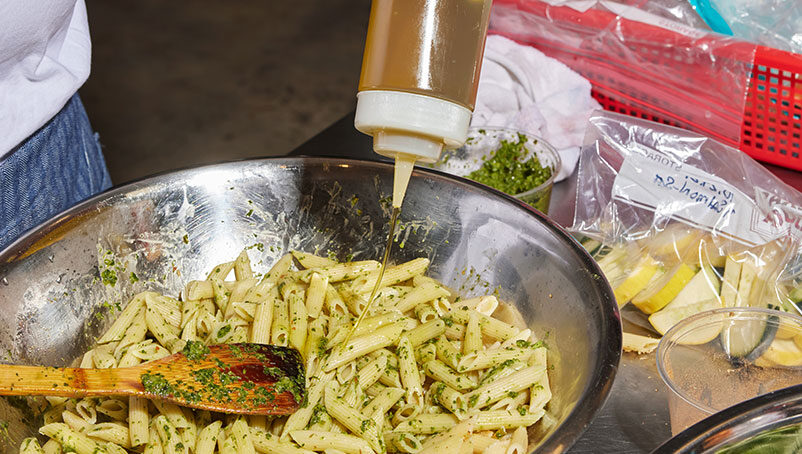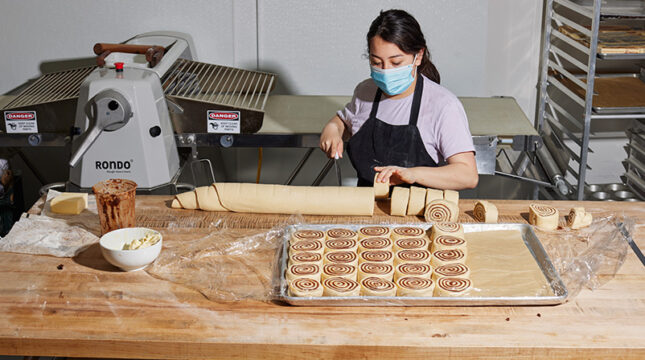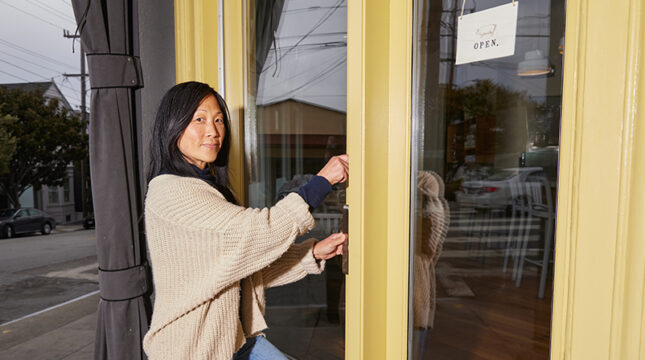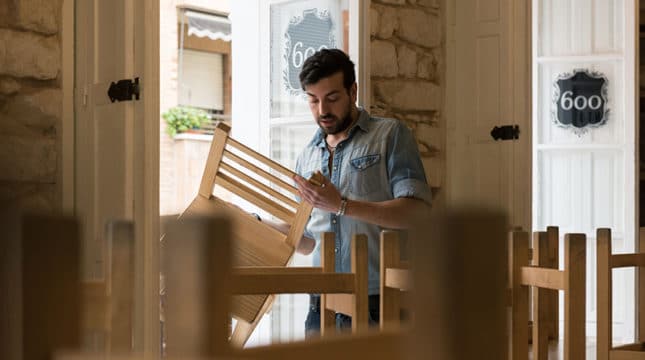The recent rise of ghost kitchens has changed the idea of restaurants.
If you’re wondering, “what is a ghost kitchen?” the simplest answer is a restaurant without a dining room. Or parking lot. Or servers. It’s a kitchen built specifically for catering or delivery.
In response to the pandemic, the ghost kitchen business model exploded as restaurateurs were drawn to lower launch and operating costs, the need for fewer staff in the midst of a tough labor market and a public that got into the habit of ordering delivery on their phone. A recent study from real estate firm CBRE suggested that ghost kitchens could make up as much as 21% of the $66 billion U.S. restaurant industry by 2025.
Whether you’re new to the idea of ghost kitchen startups or building out a business plan for dumpling delivery, we’ve created a guide to walk you through the process of how to start a ghost kitchen. Discover the questions to ask, the steps to take and how a virtual kitchen can help you test a new concept or generate additional revenue.
What is a ghost kitchen?
Ghost kitchens crank out burgers and chicken wings meant to be eaten at another location. In 2017, “virtual restaurants” gained traction as menus available for delivery on third-party apps like Uber Eats or DoorDash.
Operators often choose to open a ghost kitchen in the back of an existing brick-and-mortar restaurant or bundle several different concepts into one central commercial kitchen. For customers, there’s no eating in, although some ghost kitchens offer a drive-through or pick-up option.
What’s driving the popularity of ghost kitchens?
Without question, the adoption of ghost kitchens was accelerated by the pandemic. From arcade chains to social media personalities, everyone was drawn to ghost kitchen startups because of changing customer habits and a lack of in-person dining options.
Concepts built around personalities or clever brand names popped up quickly to take advantage of a growing demand for food delivery. Consider YouTuber Jimmy Donaldson, known online as MrBeast, who launched nearly 300 locations of MrBeast Burger simultaneously in December of 2020 and sold more than 1 million burgers in three months.
Ghost kitchens offered the opportunity to test new concepts without risking an existing brand or spending a lot of money on a new space. So, exactly how much does it cost to start a ghost kitchen? Restaurant supplier US Foods estimates that a chef could launch a ghost kitchen for $50,000, a fraction of the six figures that might be required to open a brick-and-mortar restaurant.
Ghost kitchens also created a valuable revenue source for restaurants attempting to replace lost income when in-person dining was prohibited. Eateries became the back-end of ghost kitchen concepts like MrBeast Burger, taking a percentage of sales.
4 questions to consider before you open a ghost kitchen
While ghost kitchens offer opportunities for revenue and experimentation, there are a host of factors that determine whether or not a concept is viable.
1. Where do your customers live?
The location of your kitchen is important, but the driving radius of your delivery drivers is what will make or break your venture. Take time with a map to understand the size of your delivery window and exactly how many customers you might be serving.
2. Is this a new concept?
Ghost kitchens can let you discover if there’s an audience for your frozen yogurt creations. Remember, an entirely new concept will need online branding, a website and heavy social media promotion to stand out in a crowded app menu.
3. How will a ghost kitchen menu work with an existing menu?
Every kitchen has limiting factors. It’s often deep fryer space. Make sure your business can handle 10 orders for waffle fries while the dining room can still serve mozzarella sticks.
4. What will I owe in taxes?
Talk to an accountant about the current local and state tax laws that might apply to your new venture. Whether a delivery service or ghost kitchen is responsible for collecting taxes varies by state and it’s important to have a sense of your tax liability to avoid future surprises.
How to start a ghost kitchen in 8 steps
With lower upfront and overhead costs, ghost kitchens might be an attractive way to add to your bottom line or pilot a new macaroni and cheese-themed menu you’ve been thinking about trying. Well, before you debut “To The Macs,” here are the eight steps you’ll need to open a ghost kitchen.
1. Find the right concept
Design a menu built for delivery. Keep an eye on the latest trends — DoorDash noted that fries were the most popular food ordered in its 2021 Deep Dish Report — and whether your food will still be delicious after a long ride in a delivery driver’s passenger seat.
2. Develop a business plan
Your new mac n’ cheese concept only works if the numbers work. Building out a restaurant business plan before you open a ghost kitchen is a key step to understanding your costs (packaging, third-party delivery fees) and potential profits for a new venture.
3. Check the licensing requirements
While ghost kitchens require fewer permits than a traditional restaurant, there are still a number of licenses you need in place before you open. Your ghost kitchen will need a business license, Employer identification number, state tax ID, and sales tax license.
When it comes to serving food, most states and municipalities require a food manager’s certification and food handler’s license. Check with your local health department and state officials for the exact requirements.
4. Secure a location
You could lease space in a commercial kitchen or use an existing restaurant’s kitchen. Always check that the proper licenses are in place before you start cooking somewhere.
Look for a restaurant space that can be used in off-hours, like evenings at a breakfast joint. Make sure you’ll have access to the kitchen, the restaurant’s permits are up to date and the right equipment (particularly if it’s something like a pizza oven or large mixer) is on hand and available when needed.
5. Train your staff
Ghost kitchens have to be built for volume, capable of handling the hour when everybody is ready for dinner or a late-night crush. Ensure each member of your kitchen staff has a valid food handlers license and a clear understanding of how to make every dish consistently.
6. Pick a delivery strategy
If you decide to build out a food delivery service, you’ll need to hire and train drivers and find the technology infrastructure to accept and process orders. You'll also need commercial auto insurance.
Keep in mind that even though third-party delivery apps allow you to launch a business quickly, they can have significant fees that may drastically reduce your profit margins.
7. Secure restaurant insurance
If you’re leasing a new space or subleasing a commercial space, general liability and workers’ compensation insurance will help protect your business.
General liability insurance can cover medical expenses in the event that a customer accuses or sues you over a claim of food poisoning or injury.
Workers’ compensation helps offset expensive medical bills in the unfortunate event that an employee is injured at work, an all too common occurrence in the fast-paced service industry.
Commercial kitchens might also require you to show a certificate of insurance before cooking onsite.
8. Develop a marketing plan
Whether you brand your cheesy mac bowls after local celebrities or create novelty menu items for buzz (we’re thinking a 12-cheese bowl of macaroni), you’ll have to build buzz. This is where a restaurant marketing plan is critical for leveraging your budget to stand out online.
How NEXT makes it easy for you to get the insurance you need
Get the business insurance you need for a ghost kitchen from NEXT. Our customized restaurant insurance offers coverage designed with your business in mind.
We know you’re busy. That’s why you can use our online application to look at policy options, learn more about costs, receive a quote, purchase coverage and get a certificate of insurance in less than 10 minutes.
Got questions? Our licensed, U.S.-based insurance professionals are ready with answers.






